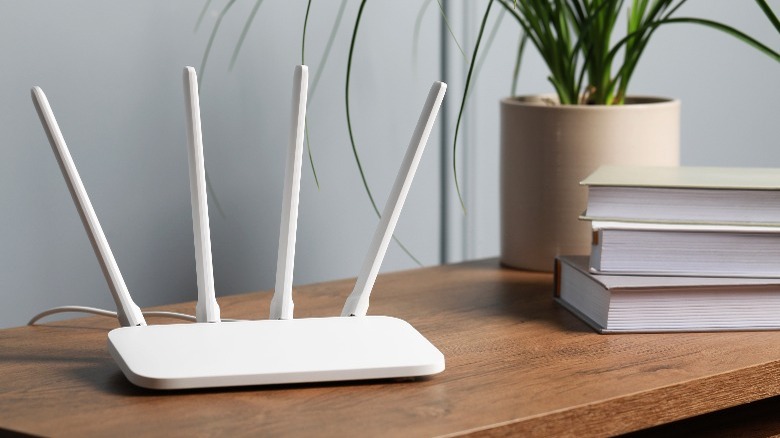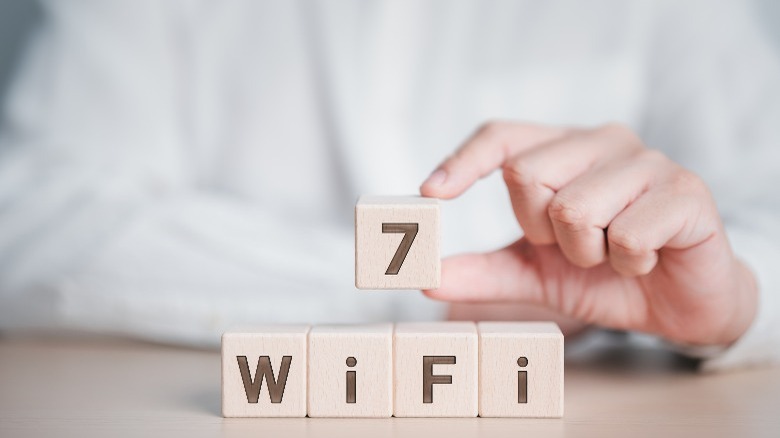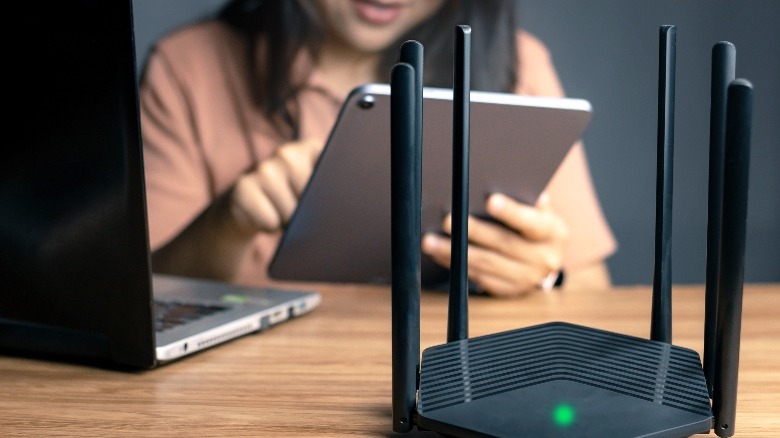What To Check If Your Gigabit Speeds Are Slower Than They Should Be
Over the years, there have been significant advancements in the world of technology. We've gone from accessing our emails using slow dial-up internet connections to being able to stream high-quality movies and TV shows and even make the switch to cloud gaming. Naturally, these services have also pushed people toward installing faster internet connections.
The speeds that you could get away with a decade ago to view mostly static webpages simply aren't enough to handle the modern-day internet. While the median broadband speed in the U.S. is around 250 Mbps, more and more providers have been offering gigabit speeds at affordable prices. Getting a theoretical 1,000 Mbps download speed is more than enough for you to never again question how fast your internet should be.
As someone who has recently upgraded to a gigabit plan, I understand how frustrating it can be when you don't receive the advertised speeds. When it comes to something as complex as networking, there can be a multitude of factors affecting your internet speed. In this guide, we'll take a look at a few of the most probable causes, alongside a few troubleshooting steps to get your internet up and running at the blazing-fast speeds you've been paying for.
Restart your Wi-Fi router and modem
Sometimes the easiest fix is the most obvious one: have you tried turning your router or modem off and on again? Wi-Fi routers are IoT devices that people have up and running for days on end, and without an occasional power cut, they don't get much room for any downtime. If you have been facing issues with your internet speed or signal strength, attempt performing a power cycle on your router. This is usually done by unplugging your router and waiting at least 30 seconds before plugging it back in. This will allow the router to properly shut down and flush its memory.
Do the same for your modem as well. The modem is usually a separate box that acts as an intermediary between your Wi-Fi router and the internet connection that runs through an outlet in the wall. Certain Wi-Fi routers come with a companion app that can be installed on Android or iOS smartphones. Check to see if your router has any pending firmware updates through the app. You can also use the app to restart your router remotely.
Find the best spot for your Wi-Fi router
If you've been running speed tests on your phone or laptop that's wirelessly connected to your internet, those speeds can vary dramatically due to the spotty nature of Wi-Fi. Unless you're situated right next to your Wi-Fi router, any walls or furniture between you and the router may put a dent in the wireless signal. Certain appliances like microwaves can even interfere with the connection.
Therefore, it is paramount to locate an ideal area in your home or office to place your router. Placing your Wi-Fi router away from immediate obstructions and appliances is a good way to yield the most out of the wireless connection. In a multistory or large house, your best bet would be to either invest in a Wi-Fi extender or repeater, a device that duplicates your Wi-Fi signal, or a mesh network, a series of routers that creates a single network that covers a larger area. These devices ensure you are well connected even in corners of your house that are the furthest away from your internet's origin.
Maybe it's time to upgrade your router
If you still notice considerably slower speeds on Wi-Fi despite being in close proximity to the router, it's time to investigate if the device can even support and emit internet at high speeds. Most modern routers support at least two bands: 2.4 GHz and 5 GHz. While the former covers a wider area, it transfers data at slower speeds and is usually the most crowded band. Certain appliances like microwaves also operate at the 2.4-GHz frequency, which can further slow down your connection speed.
The 5-GHz band allows for much faster transmission of data and is usually the one recommended for high-speed internet connections over 1 Gbps. Higher-end Wi-Fi routers also support a 6-GHz band, which is the fastest of the three, but also the weakest in terms of the area it covers. Now that we've established the various frequencies a router can operate at, the next thing you should check, if you haven't been receiving gigabit speeds on connected devices, is if your router supports both bands.
Depending on your router configuration, you might have two different networks, one operating at 2.4 GHz and the other at 5 GHz, or you might just have one network that supports both bands dynamically. Check your phone or computer to see if you can find a Wi-Fi network of the same name, but one that supports 5 GHz. If you discover your router doesn't support the 5-GHz band, it's time to upgrade. Upgrading your router, however, is only half the battle — you will still require a phone or laptop capable of handling newer technologies such as Wi-Fi 6 or Wi-Fi 7 to make the most of your internet speed.
Understanding your internet speeds
Although your service may be advertised as a gigabit connection, most ISPs (internet service providers) display the actual speeds in fine print as "typical download speeds," which may not be 1,000 megabits per second. For example, my ISP in Australia lists the typical evening speeds as 811 Mbps, despite the plan being dubbed "Lightspeed 1000/50." This simply means that during peak hours, I am unlikely to get 1,000 Mbps download speeds. So if your internet hovers around 800-900 Mbps, this is standard behavior and not something to worry about.
Additionally, if a device you own has an Ethernet port, it's a good idea to utilize it. Switching to a wired connection eliminates all the drawbacks that come with a typical Wi-Fi signal and is especially recommended for competitive online gaming or video streaming, where every bit of latency matters. And just like an old router can affect your internet speed, your Ethernet cable can also affect the speed. While Cat 5e Ethernet supports up to 1 Gbps in data transfer speeds, upgrading to a Cat 6 Ethernet cable unlocks a higher ceiling.
If you've tried restarting your router and modem, placing the router in an ideal spot, adding an extender or mesh network, and testing your internet speed on a device that's connected through Ethernet, but you are still disappointed with the speed, contacting your ISP for a solution is your next best bet.




